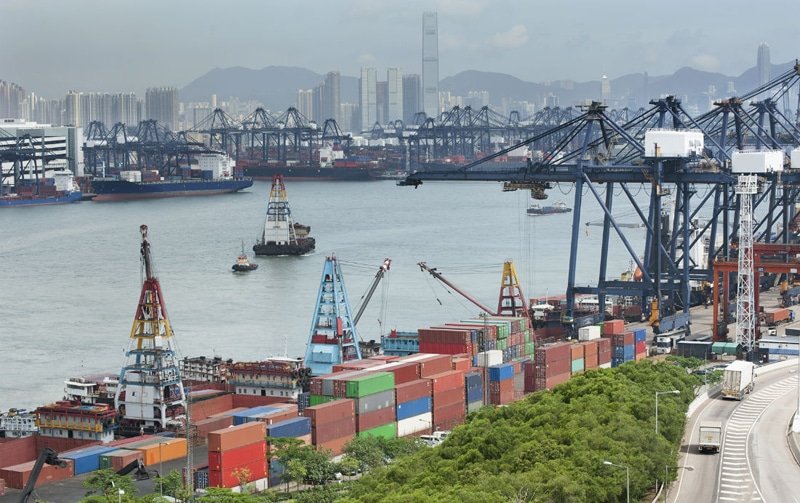
Thailand’s maritime network is a linchpin of regional trade flows in Southeast Asia. Understanding its major ports—not just in terms of infrastructure but also strategic integration—is crucial for optimal logistics planning. Shenzhen Guanwutong International Freight Forwarding Co., Ltd. offers this detailed breakdown to help you harness Thailand’s port ecosystem with confidence and efficiency.
Thailand’s Gateway Ports: Profiles of the Main Hubs
Laem Chabang Port
Thailand’s premier deep-sea shipping terminal, located on the Eastern Seaboard. Developed in the late 1980s and operational since 1991, Laem Chabang is designed to handle Post-Panamax vessels and currently manages around 7 million TEUs annually. Its proximity to the Eastern Economic Corridor enhances connectivity with industrial estates and smart city hubs.
Bangkok Port (Khlong Toei Port)
Nestled in central Bangkok along the Chao Phraya River, Bangkok Port remains vital for regional trade and smaller cargo volumes. Despite its capacity limitations—restricted draft and vessel size—it handles approximately 1.5 million TEUs per year.
Sriracha (Sriracha Harbor Deep Seaport)
Another important port that supports Thailand’s expanding trade, especially in the Eastern Seaboard region. It functions as a supplementary deep-sea port, helping decongest Laem Chabang.
Map Ta Phut Port
Located near Rayong within the EEC zone, Map Ta Phut primarily handles industrial exports, particularly petrochemicals and heavy cargo, giving it strategic importance.
Songkhla Port
Operating in southern Thailand, Songkhla offers access to the Andaman Sea and plays a pivotal role in southern regional logistics and maritime connectivity.
Southeast Asia’s Logistics Backbone: Summary of Key Ports
| Tên cổng | Type | Strategic Role |
| Laem Chabang | Deep-sea container | Handles annual 7M TEUs; hub for industrial exports |
| Bangkok (Khlong Toei) | River port | Central access to Bangkok; handles regional cargo |
| Sriracha | Deep-sea container | Additional capacity for eastern Thailand |
| Map Ta Phut | Industrial port | Petrochemical export hub in EEC region |
| Songkhla | Southern port | Gateway to Andaman Sea trade routes |
Thailand’s Port Authority & Infrastructure Upgrades
Thailand’s port infrastructure is overseen by the Port Authority of Thailand (PAT), which regulates major ports including Bangkok, Laem Chabang, Chiang Saen, Chiang Khong, and Ranong. As part of a broader modernization initiative, PAT is transitioning five key ports into smart, green facilities by 2030, aiming to streamline operations and enhance environmental performance.
What This Means for Logistics Strategy
- Port Selection Matters
For heavy industrial exports or deep-sea vessels, Laem Chabang is optimal. Smaller, time-sensitive shipments into Bangkok benefit from Bangkok Port’s inland proximity. - Gateway Agility
Ports like Sriracha, Map Ta Phut, Và Songkhla provide routing alternatives, reduce congestion risk, and cater to specific cargo types. - Smart & Green Advantages
As ports adopt greener and more automated systems, logistics becomes faster and more predictable. Forwarders should favor these ports in supply chain design. - EEC Integration Benefits
With industrial and infrastructure investment under the Eastern Economic Corridor, ports such as Laem Chabang Và Map Ta Phut increasingly connect to smart city ecosystems.
How Guanwutong Enhances Your Thailand Logistics Chain
- Port Matching Expertise: We guide you in choosing the most suitable Thai port aligned with your cargo type, volume, and urgency.
- Seamless Hub Integration: From port to rail or ICD (e.g., Lat Krabang inland depot linked to Laem Chabang via rail), we orchestrate smooth cargo transitions .
- Green Logistics: We prioritize smart/green ports and support sustainability through eco-conscious routing and terminal selection.
- Customs & Compliance Support: Our team navigates Thai customs, permits, and documentation to minimize delays and optimize clearance.
- Multi-Modal Routing Solutions: We combine sea, rail, and road networks for tailored Thailand logistics solutions.
Final Thoughts
Thailand’s port landscape is diverse and rapidly evolving, providing both opportunities and challenges for forwarders. Understanding and leveraging this port network ensures logistical efficiency, pace, and competitive edge in Southeast Asia.Công ty TNHH Vận tải hàng hóa quốc tế Shenzhen Guanwutong is your expert partner for turning Thailand’s maritime infrastructure into strategic logistics advantage.
